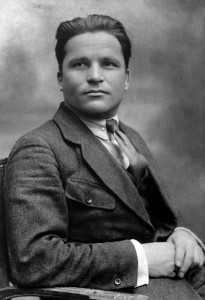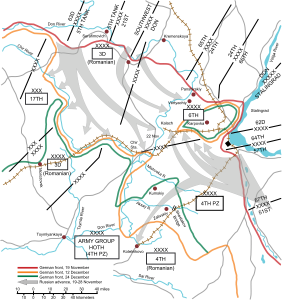Sergei Mironovich Kirov was assassinated on December 1st 1934, likely by orders from his rival Joseph Stalin. Charismatic, good looking, and well liked, Kirov was a definite threat to Stalin who was trying to consolidate his power at the time. At the 1934 party congress, Kirov received only 3 negative votes whereas Stalin received far more. Unfortunately for Kirov, Stalin controlled the vote tally and he was elected instead of Sergei.
Born on March 27, 1886 as Sergei Mironovich Kostrikov, Kirov was orphaned at a young age and was sent to an orphanage at the age of 7. His education was paid for by wealthy benefactors which allowed him to graduate from an industrial school in Kazan where he received an engineering degree. He quickly became a Marxist as Russian society faced the crises of the early 1900’s.
After being arrested during the 1905 revolution, Kirov joined the Bolshevik party. He fought with the Bolsheviks in the Civil War as a commander in Astrakhan. According to Montefiore, “During the Civil War, Kirov was one of the swashbuckling commissars in the North Caucasus beside Sergo and Mikoyan. In Astrakhan he enforced Bolshevik power in March 1919 with liberal blood-letting: over four thousand were killed. When a bourgeois was caught hiding his own furniture, Kirov ordered him shot.”
In 1921 Kirov took a managerial post in the Communist Party in Azerbaijan as a loyal ally of Joseph Stalin. For this he was awarded the position as head of the Communist Party in Leningrad. Together with Sergo Ordzhonikidze, Kirov sought to soften Stalin’s harsh treatment of those who dared disagree with him. Because of this stance, he became increasingly popular much to the chagrin of Stalin.
It was clear that Kirov had to go, so it is likely that Stalin ordered his murder. The head of the secret police, the NKVD was Genrikh Yagoda. He arranged for Kirov to be assassinated. The man who was hired to carry out the deed was one Leonid Nikolaev, a erratic man who held a grudge against the Party leadership.
On December 1st, the guards protecting Kirov was shuffled and not as tight as was normal. This planned change allowed Nikolaev to get to Kirov who shot in the back of the neck. Nikolaev was captured and executed in secret. Stalin for his part used the Kirov assassination to begin his Great Purge.
Not only was Nikolaev executed but so was most of his family and a number of his friends. Stalin blamed the murder on his rivals like Grigory Zinoviev and Lev Kamenev, both of whom were eventually tried and executed. While there is no direct evidence that Stalin was complicit in the murder, there is little doubt that he ordered it. Everyone involved in the assassination of Kirov, like the guards around Kirov and Yagoda were dead by 1937. As author Boris Nikolaevsky wrote “One thing is certain: the only man who profited by the Kirov assassination was Stalin.”[




Alexander Godunov
On this day in 1949, world renowned ballet star Alexander Godunov was born in Sakhalin, Russia, then part of the USSR. Godunov started dancing in Riga, Latvia at the age of 9 where he met and became friends with future ballet star Mikhail Baryshnikov. Over the years Godunov continued to move upwards in the ballet world eventually ending up in 1971 with the Bolshoi Ballet, the oldest ballet troupe in the world. He was named “premier danseur” shortly after joining.
Because of his dashing good looks, he became a Soviet film star acting in movies by acting in The Thirty-first of June by J. B. Priestley and as Vronsky in Anna Karenina. But he was disillusioned with Soviet life despite living a coddled life. At the height of Cold War tensions in 1979 while on tour with the Bolshoi in New York City he defected which caused a major international diplomatic row.
As soon as the KGB learned of his defection they took Godunov’s wife, Lyudmila Vlasova into custody and put her on a plane heading to Moscow. The flight was blocked form leaving as U.S. diplomats demanded that they be allowed to ask Vlasova if she was leaving under her own free will. Leonid Brezhnev and U.S. President Jimmy Carter then got involved in the incident. The State Department had prepared a U.S. passport for Vlasova but she declined the offer and she left for home three days after getting on the plane. She divorced Godunov in 1982.
Godunov joined the American Ballet Theater under old friend Mikhail Baryshnikov as the principle dancer. He and Baryshnikov has a falling-out in 1982 and he was fired. From here Godunov traveled the world as a guest dancer until he decided to try his hand again at acting in Hollywood.
His roles were varied, from the Amish farmer in Witness to the evil German Karl in Die Hard to a narcissist piano maestro in The Money Pit. He met Jacqueline Bisset whom he stayed with until 1988. Godunov became a naturalized U.S. citizen in 1987.
Tragically, Alexander Godunov died in 1995 at the age of 45 supposedly of complications of alcohol abuse and hepatitis.